Spatialization in Electroacoustic Music
In electronic and electroacoustic music, spatialization is the distribution of sound in space, using loudspeakers or headphones. Although spatial aspects have also been considered in acoustic music through the spatial arrangement of musicians and instruments, electronic means allow a more dynamic use of space as a composition parameter. This can happen during studio productions or in live performance. These possibilities have been explored since the early days of electroacoustic music and have evolved with the technology over the decades.
Pupitre D'Espace
Pierre Schaeffer developed the Pupitre D'Espace, a device for spatializing tape music in real time, in 1951. This special case of spatialization for acousmatic music is also referred do as diffusion. The device works with three induction coils for detecting the position of the hand-held transponder in space.
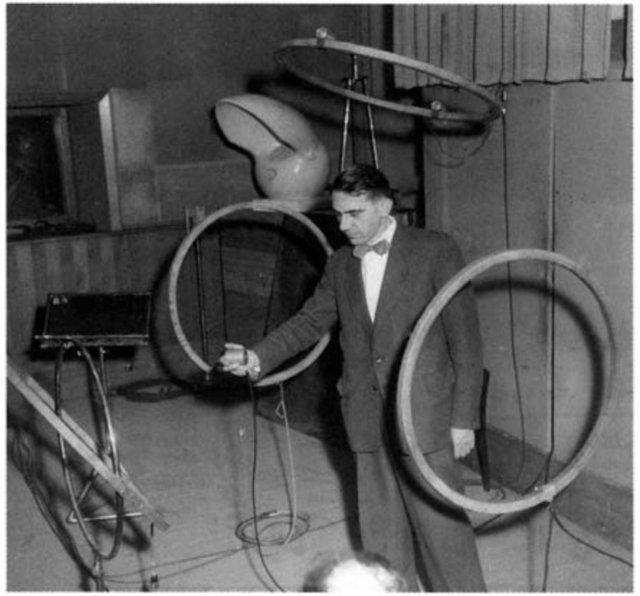
Image from Nicolau Centola's PhD thesis.
Poème électronique
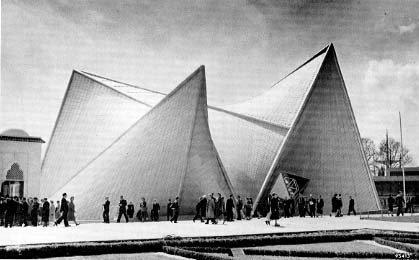
The Philips Pavilion (from medienkunstnetz )
The Philips Pavilion, built for the 1958 World's Fair in Brussels, featured a multi-channel sound system with an unconventional loudspeaker arrangement. It was used for Edgard Varèse's Poème électronique to move sound along paths defined by the loudspeaker positions.
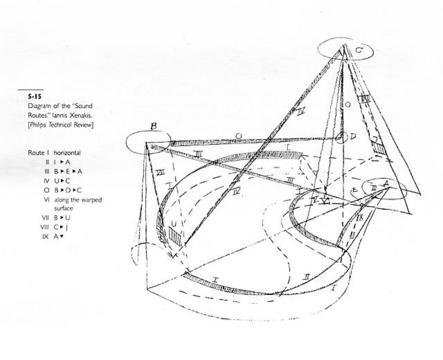
Source movements in 'Poème électronique'
Rotationstisch
Starting in 1959, Stockhausen used a rotating table (Rotationstisch) for creating sound movements in quadraphonic tape compositions. A loudspeaker in the center is rotated with the table, captured by four fixed microphones surrounding it. The directivity but also the inherent Doppler effect creates the image of a rotating sound source, when played back on a quadraphonic setup.
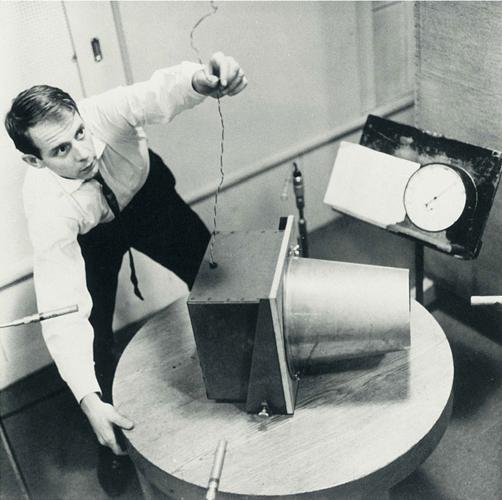
Loudspeaker Orchestras
A loudspeaker orchestra uses loudspeakers themselves as musical instruments, rather than as means for reproducing sound. A typical setup uses models with very different, distinct characteristics, placed at individual positions, rather than in a geometric shape. During a performance, pre-composed music, often stereo, can be sent to the different speakers or speaker groups. This process, referred to as diffusion, is a standard technique in Acousmatic Music.
The Acousmonium
The Acousmonium, launched by French GRM (Groupe de Recherches Musicales) in 1974, is the original and most prominent loudspeaker orchestra.
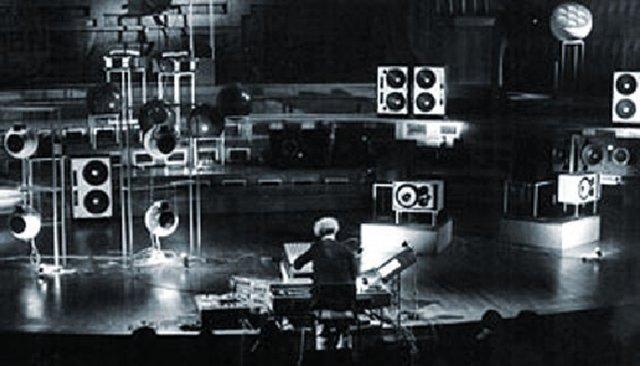
Francois Bayle with the Acousmonium from "Our Research for Lost Route to Root" (Jérôme Barthélemy, 2008)
BEAST
The BEAST (Birmingham ElectroAcoustic Sound Theatre) is a younger system, following the principles of the Acousmonium. It was brought to Berlin for the 2010 edition of the festival Inventionen, when Jonty Harrison was guest professor at TU Berlin.
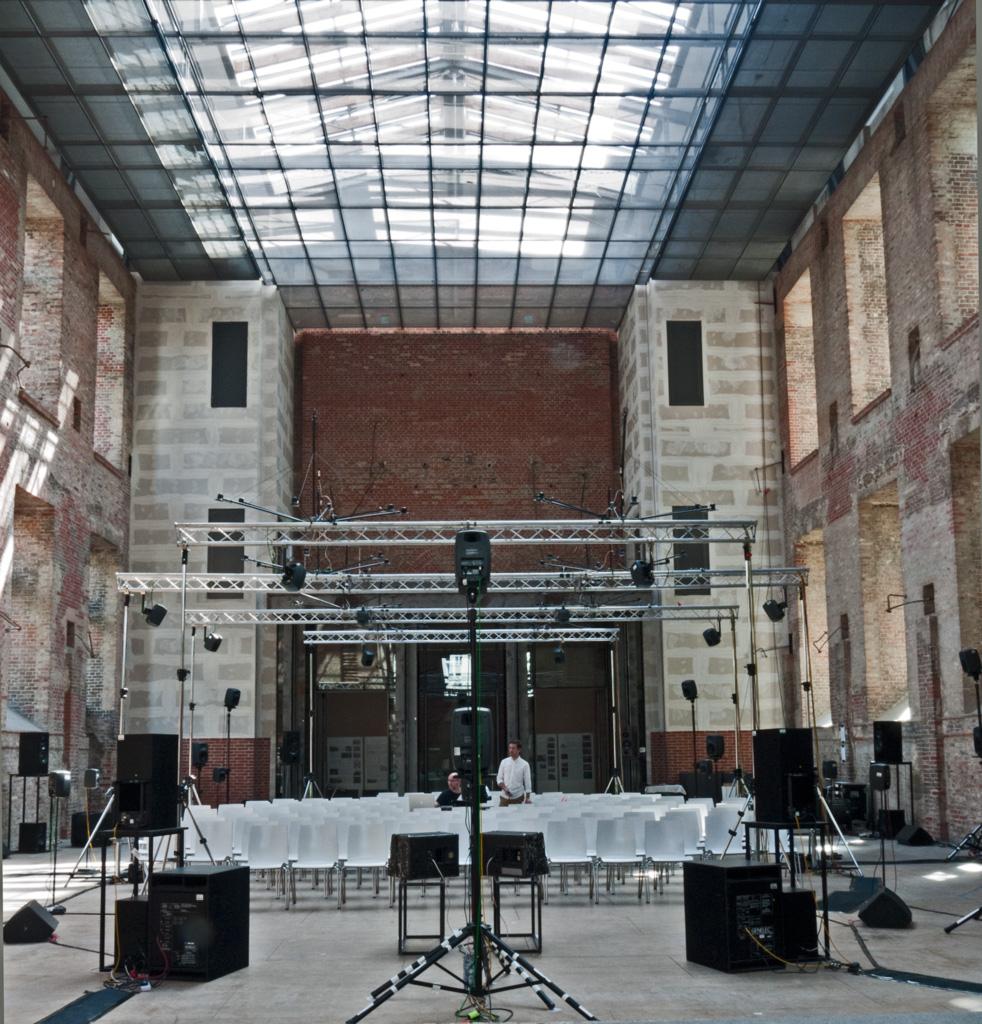
The BEAST at Elisabeth-Kirche, Berlin
HaLaPhon
Principle
The HaLaPhon, developed by Hans Peter Haller at SWR in the 70s and 80s, is a device for spatialized performances of mixed music, and live electronics. The first version was a fully analog design, whereas the following ones used analog signal processing with digital control.
The HaLaPhon principle is based on digitally controlled amplifiers (DCA), which are placed between a source signal and loudspeakers. It is thus a channel-based-panning paradigm. Source signals can be tape or microphones:
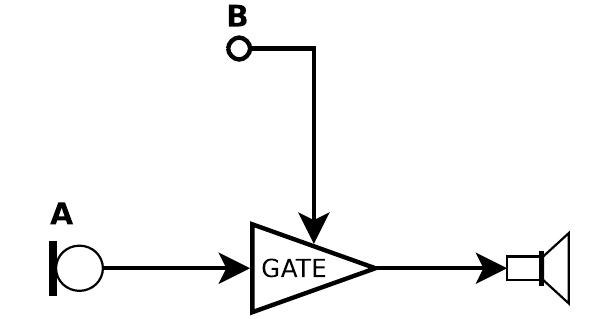
DCA (called 'Gate') in the HaLaPhon.
Each DCA can be used with an individual characteristic curve for different applications:
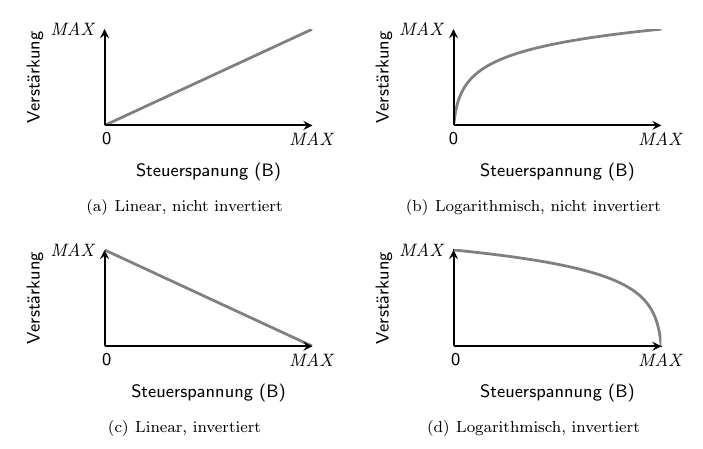
DCA: Different characteristic curves.
Quadraphonic Rotation
A simple example shows how the DCAs can be used to realize a rotation in a quadraphonic setup:
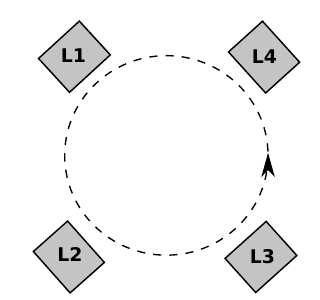
Circular movement with four speakers.
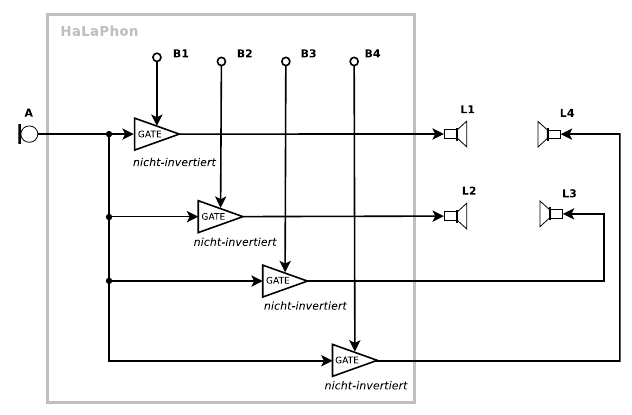
Quadraphonic setup with four DCAs.
Envelopes
The digital process control of the HaLaPhon generates control signals, referred to as envelopes by Haller. Envelopes are generated through LFOs with the following waveforms:
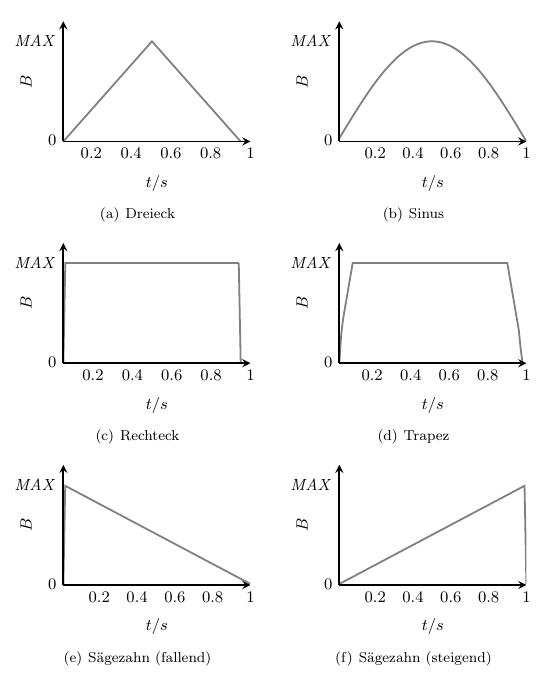
Circular movement with four speakers.
Envelopes for each loudspeaker gain are synchronized in the control unit, resulting in movement patterns. These can be stored on the device and triggered by the sound director or by signal analysis:
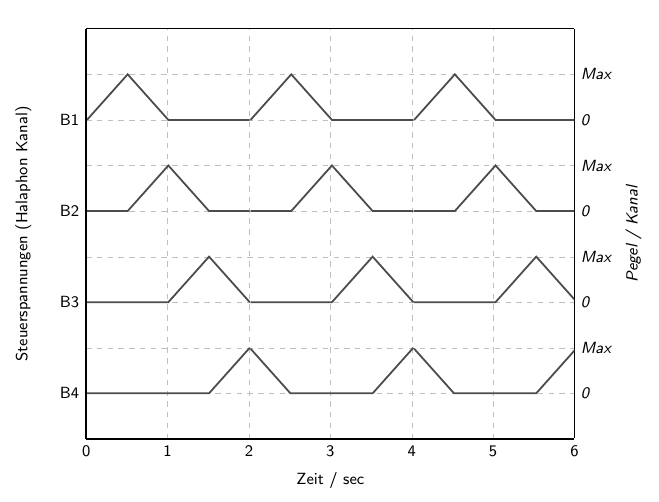
Quadraphonic setup with four DCAs.
References
2017
- Andreas Pysiewicz and Stefan Weinzierl.
Instruments for spatial sound control in real time music performances. a review.
In Musical Instruments in the 21st Century, pages 273–296.
Springer, 2017.
[details] [BibTeX▼]
2016
- Jonathan Fielder.
A history of the development of multichannel speaker arrays for the presentation and diffusion of acousmatic music.
published online, 2016.
URL: https://www.jonfielder.com/writing.html.
[details] [BibTeX▼]
2015
- Martha Brech and Henrik von Coler.
Aspects of space in Luigi Nono's Prometeo and the use of the Halaphon.
In Martha Brech and Ralph Paland, editors, Compositions for Audible Space, Music and Sound Culture, pages 193–204.
transctript, 2015.
[details] [BibTeX▼]
2014
- Martha Brech and Henrik von Coler.
The Halaphon and its use in Luigi Nono's 'Prometeo' in Venice.
In Proceedings of the 9th Conference on Interdisciplinary Musicology (CIM). 2014.
[details] [BibTeX▼]
1995
- Hans Peter Haller.
Das Experimentalstudio der Heinrich-Strobel-Stiftung des Südwestfunks Freiburg 1971-1989: die Erforschung der elektronischen Klangumformung und ihre Geschichte, Teil 1.
Nomos, Baden-Baden, 1995.
[details] [BibTeX▼] - Hans Peter Haller.
Das Experimentalstudio der Heinrich-Strobel-Stiftung des Südwestfunks Freiburg 1971-1989: die Erforschung der elektronischen Klangumformung und ihre Geschichte, Teil 2.
Nomos, Baden-Baden, 1995.
[details] [BibTeX▼]
